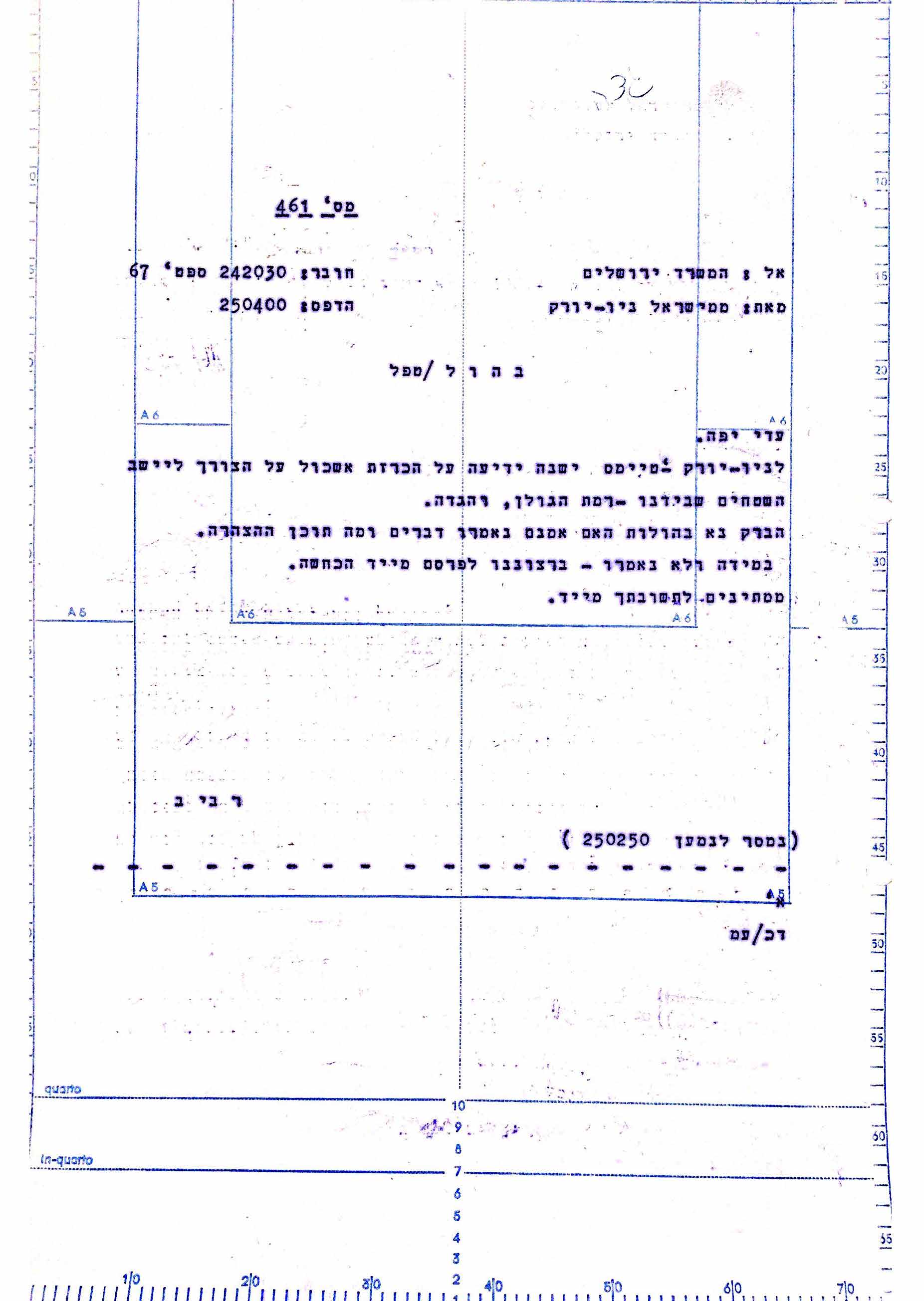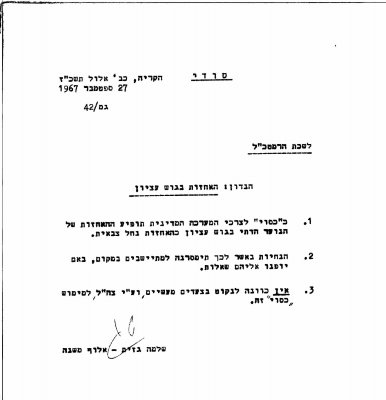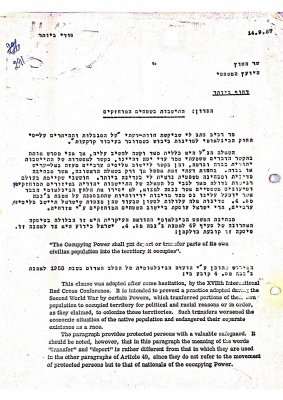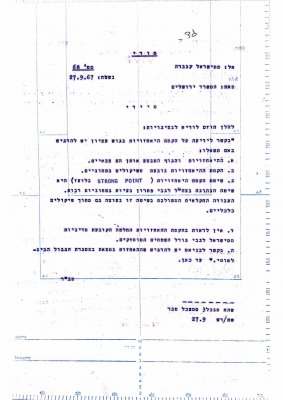The settlement of – some would say return to – Gush Etzion (the Etzion bloc), which lies southwest of Jerusalem and Bethlehem, began immediately after the 1967 War. It ended a 19-year year hiatus in Jewish settlement in the area, which had Jewish communities until 1948 and was designated for the Arab state under the partition plan. In the battle for the area on May 13, 1948, nearly 250 Jewish fighters and civilians were killed. Gush Etzion now has 12 settlements. Like many others, they were initially built under the guise of security needs.
When work began on establishing settlements in Gush Etzion in September 1967, Colonel Shlomo Gazit, Chair of the Policy-Security Coordination Committee in the Territories, wrote to Chief of Staff Yitzhak Rabin that the settlement would be presented as a Nahal military outpost “as a cover”. In practice, however, the outpost had no military function and it was an entirely civilian enterprise. The need for the military cover Gazit mentioned stemmed from legal reasons.
The legal advisor for the Ministry of Foreign Affairs at the time, Theodore Meron, wrote a memo in September 1967, listing the legal impediments to settling the newly occupied territories. Meron noted that in light of Art. 49 of the Fourth Geneva Convention (“The Occupying Power shall not deport or transfer parts of its own civilian population into the territory it occupies”), there is a “categorial prohibition” on settling Israeli citizens in the occupied territories. “I am afraid there is great sensitivity in the world with regards to the entire issue of Jewish settlement in the held territories”, the legal advisor noted. Nevertheless, he did give the government a narrow opening for settling the territories in noting that, “Should measures to institute Jewish settlement in the held territories be adopted, it appears to me that it is vital that said settlement is carried out by military bodies […] Such settlement must be carried out in the form of camps and appear externally to be temporary […]”.
As Legal Advisor Meron anticipated, rumors of Jewish settlement in the occupied territories reverberated in the local and international media, which forced the Israeli Ministry of Foreign Affairs to instruct diplomatic missions around the world on how to respond to negative press about Israel. Correspondence between the Ministry of Foreign Affairs and diplomatic missions reveals Israel’s difficulty in addressing the sensitivities around this issue. The exchanges reveal Israeli diplomats were not necessarily aware of Israel’s settlement policy in the occupied territories, and even when they did know, they had trouble offering satisfactory explanations to appease public opinion abroad. At the same time, criticism on the international scene prompted the Ministry of Foreign Affairs to proactively contact diplomatic missions and send them the – fictitious – message that the settlements in Gush Etzion were military outposts. “The government has agreed to establish military-settlement outposts in Gush Etzion and the Golan Heights”, a cable from the Ministry of Foreign Affairs to the Israeli consulate in New York City said. In another cable, the ministry stressed that, “the outposts and the agency implementing them are military”, and that these outposts “were built for security reasons”.
As noted, in reality, the settlements were entirely civilian in nature. Colonel Gazit openly stated as much in his letter to Rabin, in which he explained the IDF, “had no intention of taking practical steps towards […] actualizing this ‘cover’”. Seeking to end the affair and prevent further criticism of Israel on the issue of settlements, the Ministry of Foreign Affairs told the embassy, “We will see to it that there are no more reports about other outposts for many weeks”. The ministry added Prime Minister Levi Eshkol had canceled his planned trip to Gush Etzion, “in order to avoid further press”.
The Israeli government and those working on its behalf used these and similar techniques to build more settlements in the occupied territories in years to come. Kfar Etzion, the first settlement in Gush Etzion, was the starting gun for Israel’s settlement enterprise in the West Bank.


















